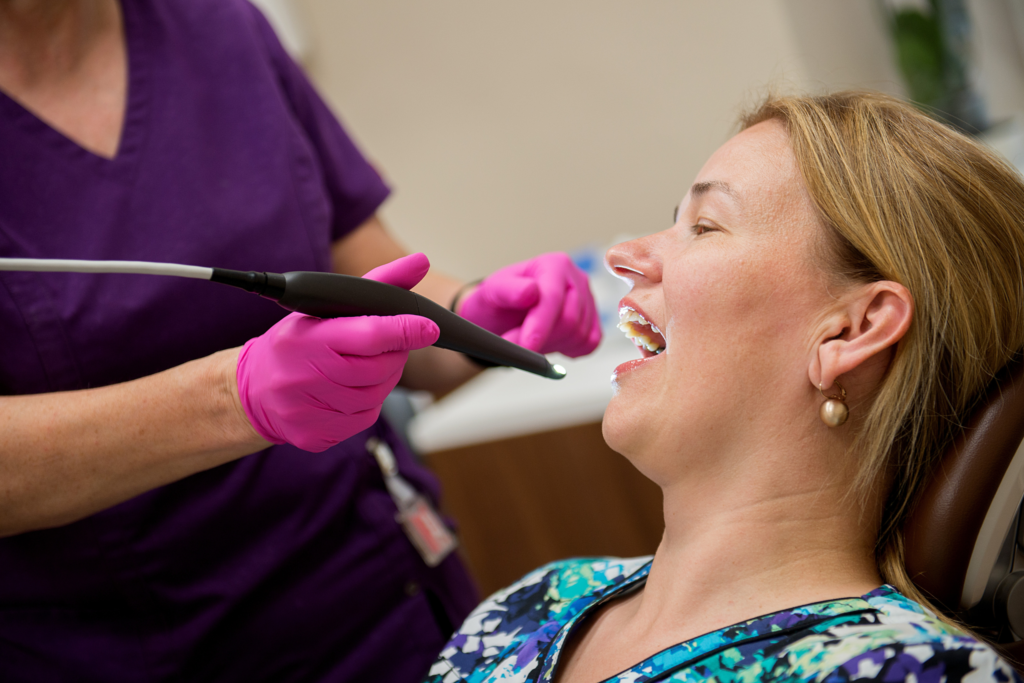
Breathe better, smile brighter
Airway-focused Orthodontics
Airway-focused orthodontics is a specialised approach that goes beyond straightening teeth. By addressing underlying airway issues, this treatment can improve breathing, sleep quality, and overall health while enhancing your smile.
What are airway-focused orthodontics?
Airway-focused orthodontics considers the relationship between your teeth, jaws, and airway health. This treatment addresses structural issues that may contribute to breathing problems such as sleep apnea, snoring, or mouth breathing. By improving airway function, we not only create a straighter smile but also support better long-term health.
Why choose this treatment?
- Improved breathing: Helps open up the airway for better oxygen flow, reducing snoring and sleep apnea symptoms.
- Enhanced sleep quality: Promotes restful sleep by addressing airway obstructions.
- Supports facial development: Encourages proper jaw growth and alignment for aesthetic and functional benefits.
- Improved overall health: Reduces risks associated with poor breathing, such as fatigue, concentration issues, and cardiovascular problems.
- Customised care: Tailored to address the unique structural needs of your face and airway.

Airway-focused orthodontic process
1.
Assessment
A detailed evaluation, including imaging and sleep studies if necessary, helps identify airway issues and misalignments.
2.
Planning
A personalised plan is created to address your specific airway and orthodontic needs, combining advanced techniques and tools.
3.
Treatment
Braces, aligners, or appliances like expanders may be used to create space in the airway, align the jaw, and straighten teeth.
4.
Progress
Regular appointments ensure treatment is progressing effectively, with adjustments made as needed.
5.
Maintenance
Retainers or ongoing care may be recommended to maintain results and support continued airway health.
Signs you might benefit from airway-focused orthodontics
You may benefit from this approach if you or your child experience:
- Chronic mouth breathing.
- Snoring or sleep apnea.
- Frequent fatigue or poor sleep quality.
- Crowded teeth or jaw misalignment.
- Narrow arches or high palate.
- Difficulty focusing or behavioural issues in children.

Techniques and appliances used in airway-focused orthodontics
Tools to support better breathing
- Palatal expanders: Widens the upper jaw to create more space in the nasal passages and improve breathing.
- Functional appliances: Encourages proper jaw alignment and growth for better airway function.
- Myofunctional therapy: Exercises to retrain muscles around the mouth and jaw, improving posture and breathing.
- Clear aligners or braces: Straightens teeth while supporting airway expansion and alignment.

— frequently asked questions —
Quick answers to your questions
How is airway-focused orthodontics different from traditional orthodontics?
Traditional orthodontics focuses primarily on aligning teeth and improving aesthetics. Airway-focused orthodontics considers the broader impact of jaw and dental alignment on breathing, sleep, and overall health.
Who can benefit from airway-focused orthodontics?
This treatment is beneficial for:
•Children with sleep-disordered breathing or mouth-breathing habits.
•Adults with jaw misalignment or sleep apnea.
•Anyone experiencing chronic fatigue, snoring, or breathing difficulties related to dental and jaw alignment.
What treatments are used in airway-focused orthodontics?
Common treatments include:
•Expanding the palate with appliances to create more space in the airway.
•Aligning teeth and jaws with braces or clear aligners.
•Myofunctional therapy to correct tongue and oral posture.
•Habit-breaking devices for children with thumb-sucking or mouth-breathing habits.
At what age is airway-focused orthodontics most effective?
Early intervention, typically between the ages of 6-12, is most effective as the jaw and facial structures are still developing. However, adults can also benefit from these treatments.
How does airway-focused orthodontics improve sleep?
By expanding the airway and correcting jaw alignment, it reduces obstructions that cause snoring or sleep apnea. This allows for better oxygen flow during sleep, leading to improved rest and overall health.
Is airway-focused orthodontics painful?
Treatments are generally no more uncomfortable than traditional orthodontic procedures. Some patients may experience mild pressure during adjustments, but this is temporary and manageable.
How long does airway-focused orthodontic treatment take?
The duration varies based on the patient’s age and the complexity of the case. Treatment typically lasts 12-24 months, but significant improvements in breathing and sleep may be noticeable earlier.
Why is airway-focused orthodontics important for children?
Proper airway development in childhood promotes better sleep, improved focus, and overall health. Addressing breathing and alignment issues early can prevent long-term complications like sleep apnea, poor posture, and dental crowding.
